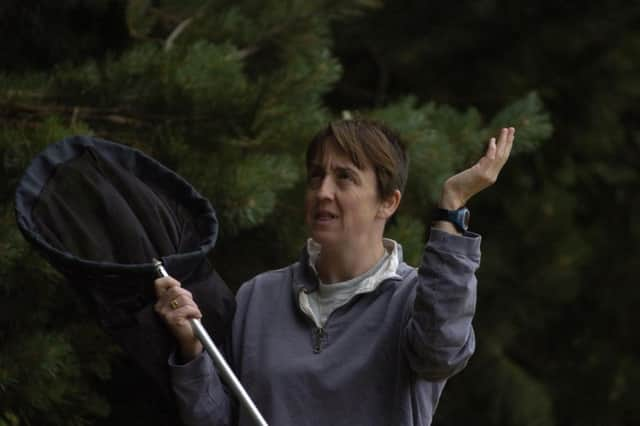Warm Scots weather brought third midges hatching


Dr Alison Blackwell, who runs the Scottish Midge Forecast, said the consequences could be more of the biting insects next year.
The scientist said that overall this year there were more than a third fewer midges than previous years because the cold and wet summer affected the two main hatches.
Advertisement
Hide AdAdvertisement
Hide AdA midge trap in Argyll had almost two million fewer insects than in 2014.
At Gairloch in Wester Ross, another trap used for surveying midge numbers were found to have fallen by one and half million insects.
It is the first time in years that the number of midges have actually fallen, let alone so dramatically.
The main reason for the dramatic fall in midge numbers was the cold spring and early summer.
The two main traps which gathered the data showed incredible decreases totalling more than four million midges less than last year.
In Argyll, 4,140,064 midges were caught, compared to 6,632,823 in 2014 - a fall of nearly 2.5 million.
In the North West trap at Gairloch in Wester Ross just 2,352,896 were caught, compared to 3,912,064 the previous year - a decrease of almost 1.6 million.
The peak for midges was also a month later - in July - but they were still biting in October, a month longer than last year, again reflecting the weather patterns.
Advertisement
Hide AdAdvertisement
Hide Ad“The length of the 2014 and 2015 seasons were relatively similar, although the 2015 season was delayed considerable due to the cool, wet/windy weather in May,” said Dr Alison Blackwell, who runs the midge forecast and is used to reporting new record highs for the pest.
“This is the most important time of the year to define the ‘midge season’ and this weather had a knock-on effect in that the Argyll trapping station caught nearly 2.5 million midges less in 2015 than 2014 and the Gairloch station caught 1.5 million less.
“The first midge generation normally peaks three-four weeks after the first emergence – this was seen in 2014, with peak catches of 194,000 (Argyll) and 144,000 (Gairloch).
“The poor weather in May 2015 this year delayed this first generation developing and probably increased mortality – as a consequence, the first peak in 2015 occurred about six weeks post emergence and the peak catches were lower than in 2014 – 180,000 (Argyll) and 77,000 (Gairloch).
“The smaller first generations meant that there were less female midges to lay eggs to give rise to a second generation – this did occur but the sizes of the second generations were much smaller in 2015 than 2014.
“The mild autumn has meant that many of the second generation midges have prolonged their survival and some midges may have laid eggs to produce a small third generation – low catches, up to 2,000 midges, have been trapped up until the beginning of October, whereas in 2014 the season stopped in early September.
“What this means for 2016 at the moment is unclear. Although overall numbers in 2015 have been comparatively low, the overwintering survival of larvae from eggs laid later in the season, together with the emergence success next spring - again, influenced by weather conditions - will be critical to the size of next year’s midge population.”
During the year, more than 100 people volunteered to be official midge count recorders after a nationwide hunt was launched.
Advertisement
Hide AdAdvertisement
Hide AdEach volunteer was provided with their own “Midge Watch Kit” and asked to send data back on a regular basis between June and August.
The portable trap includes a midge-attracting odour and removable sticky section to snare the biting beasties.
The midge watchers then photograph twice a week the midges caught in the trap and send the pictures to the Scottish Midge Forecast.
It is able to calculate the number of midges in the photographs by using special digitalised software.
The Scottish tourism industry is estimated to lose about £286 million-a-year because of the voracious and swarming insects.
A previous study also found that many tourists said they would not return to Scotland at the same time of year because of the biting beastie.
Two million midges weigh just a kilo - and one square metre of land will contain about 500,000 of the insects. Only the female bites.
The flying midge lives for between two days and two weeks depending on weather conditions. During this time the female can lay up to 170 eggs in as much as three batches. In a normal year there are two to three generation of midges born during the season.